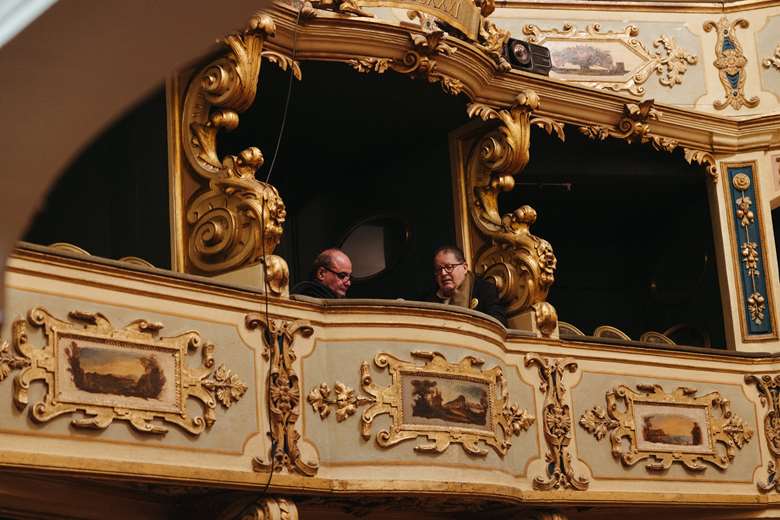Winter sun at Malta’s Valletta Baroque Festival
Simon Mundy
Friday, February 9, 2024
Simon Mundy’s trip to the Valletta Baroque Festival in Malta offers a welcome break from British weather. Whisking us away to this island paradise, Mundy examines how the festival offers baroque authenticity as well as creative departures from historical accuracy

Malta is a perfect refuge from the rest of Europe's weather in January. A chill wind can blow in from the sea, but it is still warm enough to sit out in the sun at a harbourside bar in the day time and get away with a light jumper at night. Strictly speaking, Valletta itself is just a sliver of a peninsula that separates the main harbour townships of Silema and Birgu. Being the smallest national capital in the European Union and with bigger centres like St. Julian's close by, Malta's capital has a 'City of London/Greater London' issue. To the visitor it all seems to be Valletta, but to the locals the capital is just the few streets in a grid pattern on the hilly promontory – a sort of Baroque Manhattan in honey-coloured stone. Getting between the towns by car is a tortuous progress through winding and often near vertical narrow streets.
It is the perfect city to host a baroque festival because, thankfully, it is not one where all the arts take place in a concrete cultural centre. Instead the Valletta Baroque Festival, which runs for the second half of January (11 – 28), is an eclectic mix of venues and styles. It makes use of the architecture of the late Renaissance up to the 18th century, when it was ruled by the semi-independent Knights of St. John, allied to the Kingdom of Sicily. The highly decorated churches reflect this heritage, and an amazing amount of the heritage has survived, given the ferocious bombardment the islands suffered during World War II, when it was one of the most important British naval bases in the Mediterranean.
The jewel of the arts venues, and inevitably at the festival's heart, is the unspoiled Teatru Manoel, first opened in 1732 and therefore contemporaneous with much of the music performed in it. The tiers of boxes rise in level after level of discrete privacy. There is no grand foyer, just entry through a small street door into a vestibule and from there into the body of the theatre. Elsewhere, the instruments too are the genuine article, like the 1790 Santucci organ in the Church of Our Lady of Victory in St. Julian, where John Aquilina gave a Sunday lunchtime recital of Frescobaldi and Domenico Zipoli.
If authenticity is almost implicit in the venues, the programme itself is much more open to other influences than historical accuracy. Kenneth Zammit Tabona, the founder and artistic director of the festival, has a very eclectic approach, happy to take the music off at a tangent or to subvert expectations. So on the stage of the Teatru Manoel he had three different pianists from Malta, Caroline Calleja (usually the Malta Philharmonic Ochestra's (MPO) harpist), Charlene Farrugia and Joanne Camilleri, playing Bach keyboard concertos on modern instruments, with the reduced strings and wind of the MPO conducted by Michael Laus, separated by a 'Scene Change' (not an interval). Purists would have muttered, the packed audience clearly relished it.
Tabona also likes to take a theme and run with it. In a bare room at the Malta Maritime Museum by the waterfront in Birgu, he challenged Luc Houtkamp's POW Ensemble to reimagine Bach's Goldberg Variations, to the point where the structure but only snippets of the music remained. Houtkamp moved the base of the ensemble from Holland to Malta ten years ago. Houtkamp and two of the ensemble obliged with Aurum Variations: harpsichordist Tom Armitage and recorder player Erik Bosgraaf, who has just been appointed director of the London International Festival of Early Music. Bosgraaf contributed the new Aria at the beginning and end, with Armitage writing the 15 even-numbered variations, Houtkamp the odd-numbered. Houtkamp's music was perhaps the more idiosyncratic, but Armitage's seemed to mesh more closely with the insistent resonance of the original, especially in the double stopping cello solo (played by Carlo Maria Paulesu) for variation 20.
A sudden serious illness prevented me from attending as many of the concerts as I had hoped to (though I can report on the excellence of Malta's hospitals). I was particularly sorry to miss the Valletta Baroque Ensemble's performances in the Oratory of San Giovanni (the city's cathedral) of Stradella's 1675 oratorio, San Giovanni Battista. The programming was truly inspired, since the Oratory houses Caravaggio's gruesome picture of the saint's beheading, painted in 1608 when the artist had sought sanctuary with the Knights, having fled Rome wanted for murder. A few months later his lifelong passion for fighting meant he had to get out of Valletta too, making for Sicily.
The sense of musical flexibility, decorative extravagance, and even Valletta's unspoilt narrow streets and alleyways, means that the festival captures the essence of the Baroque more closely than anywhere else. I hope to return and do it full justice another year.


